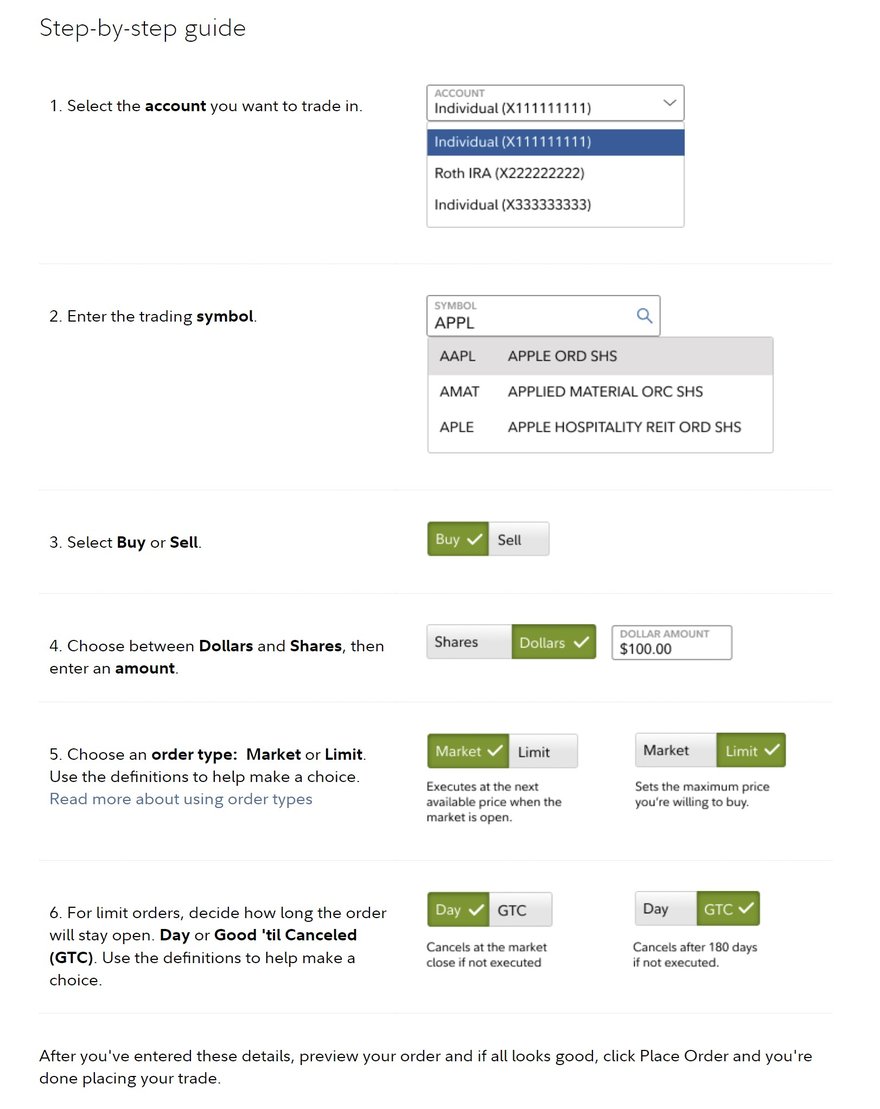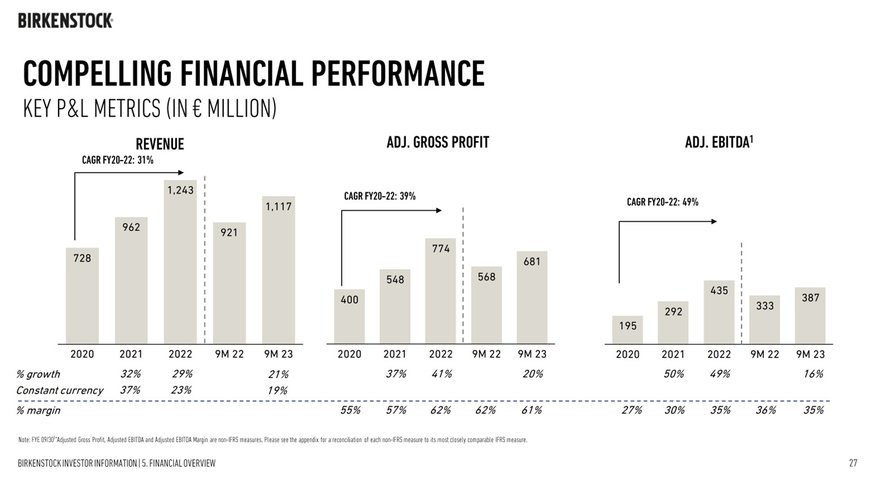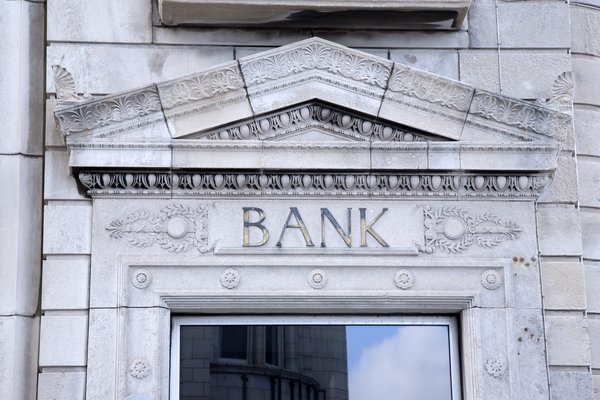Birkenstock's (BIRK 1.36%) roots date back all the way back to 1774. While the German company has been making footwear for about 250 years, it hasn't been a public company all that long. It completed its initial public offering (IPO) in October 2023, making it one of the youngest publicly traded stocks.
Despite its age, Birkenstock believes its best days are ahead. The company thinks that every human being on the planet could benefit from its footwear, which it designs to encourage proper foot health. As more people learn about its footwear -- primarily by word-of-mouth from other satisfied customers -- it should continue to grow sales and profitability. The company also has a long history of innovation to create new products that drive growth.
You might already be one of the many people wearing Birkenstock's footwear. That could have you wondering how to invest in its stock. Here's a step-by-step guide on investing in the shoe stock and some factors to consider before adding it to your portfolio.
How to buy
How to buy Birkenstock stock
It's pretty easy to buy shares of Birkenstock. Here's a step-by-step guide on how to add the footwear company to your portfolio.
1. Open a brokerage account
You'll need to open and fund a brokerage account before buying shares of any company. If you don't have one yet, here are some of the best-rated brokers and trading platforms. Take your time to research the brokers to find the best one for you.
Stock
2. Figure out your budget
Before making your first trade, you'll need to determine a budget for how much money you want to invest. You'll then want to figure out how to allocate that money. The Motley Fool's investing philosophy recommends building a diversified portfolio of 25 or more stocks you plan to hold for at least five years. You don't have to get there all at once. For example, if you have $1,000 available to start investing, you might want to begin by allocating that money equally across at least 10 stocks and then grow from there.
3. Do your research
It's essential to thoroughly research a company before buying its shares. You should learn about how it makes money, its competitors, its balance sheet, and other factors to make sure you have a solid grasp on whether the company can grow value for its shareholders over the long term. Continue reading to learn more about some crucial factors to consider before investing in Birkenstock stock.
4. Place an order
Once you've opened and funded a brokerage account, set your investing budget, and researched the stock, it's time to buy shares. The process is relatively straightforward. Go to your brokerage account's order page and fill out all the relevant information, including:
- The number of shares you want to buy or the amount you want to invest to purchase fractional shares.
- The stock ticker (BIRK for Birkenstock).
- Whether you want to place a limit order or a market order. The Motley Fool recommends using a market order since it guarantees you buy shares immediately at the market price.
Here's a screenshot of an order page from the five-star rated Fidelity Investment's trading platform:

Once you complete the order page, click to submit your trade and become a Birkenstock shareholder.
Should you invest?
Should I invest in Birkenstock?
It's imperative to research a company before buying its stock. The research process can help increase your belief that a stock can deliver worthwhile returns over the long term. However, it could also cause you to see something about the company that changes your mind about buying shares.
Here are some reasons why you might want to invest in Birkenstock:
- You're a huge fan of Birkenstock's products.
- You think the company can achieve its financial goals of delivering revenue growth in the mid to high teens with strong profitability over the long term.
- Buying Birkenstock shares would help diversify your portfolio, including increasing your international exposure.
- You believe the company can achieve its goal of getting its leverage ratio below 1.0 times.
- You think the company can outperform the S&P 500 over the next three to five years.
- You don't need dividend income right now.
- You're not overly concerned about a potential recession's impact on Birkenstock's growth rate or profit margins.
On the other hand, here are some reasons why you might decide against investing in the footwear company:
- You don't like the company's products or haven't tried them.
- You already own several other shoe and apparel stocks.
- You're concerned about Birkenstock's debt level and worry that it might struggle to achieve its deleveraging plan.
- You're worried that an economic downturn could slow Birkenstock's sales and pressure its margins.
- You're not convinced Birkenstock can outperform the S&P 500 over the next few years.
- You don't want to own shares of companies with headquarters outside the U.S.
- You're retired or nearing retirement and need investments that produce income.
Profitability
Is Birkenstock profitable?
Digging into a company's profitability is an important part of an investor's research process. Ideally, you'd want to see a company producing strong profits that rise over time. Profit growth is typically a major driver of a stock's performance over the long haul.
Birkenstock is a profitable company. The shoemaker reported 40 million euros ($44 million) of net profit during the first six months of 2023 on 644 million euros ($703 million) in revenue. While its revenue was up 27% compared to the previous year, earnings declined by 45%. That was due to higher selling, distribution, and general administrative expenses, increased finance costs, and foreign exchange losses.
However, as the slide below shows, the company has delivered healthy revenue, adjusted gross profit, and adjusted earnings before interest, taxes, depreciation, and amortization (EBITDA) growth over the last few years:

The company expects to grow its revenue and earnings over the long term. It's aiming for revenue growth in the mid to high teens while keeping its adjusted gross profit margin above 60% and adjusted EBITDA margin above 30%. Birkenstock should also see lower financing costs in the future. It used its IPO proceeds to repay debt and plans to continue reducing debt in the future with retained cash flow, which should drive down its interest expense. This outlook implies the company's profitability should continue growing in the future.
Dividends
Does Birkenstock pay a dividend?
Birkenstock hasn't made dividend payments as of late 2023. The company had just completed its IPO. It noted in its IPO prospectus that it didn't "anticipate paying any cash dividends in the foreseeable future." It plans to retain all its available funds and future earnings to finance the development and expansion of its business.
ETFs
ETFs with exposure to Birkenstock
Many investors prefer to make truly passive investments rather than directly owning stocks they must actively monitor. Buying an exchange-traded fund (ETF) can be a great way to gain passive exposure in a company they're interested in without actively owning the stock.
Exchange-Traded Fund (ETF)
As a recent IPO, Birkenstock hadn't yet made its way into any ETFs as of late 2023. That's because many of the indexes that ETFs follow have guidelines preventing them from holding stocks until they have traded publicly for at least three months.
However, investors interested in recent IPOs could consider the Renaissance IPO ETF (IPO 2.16%). This ETF typically purchases shares of a company within 90 days of its IPO and will hold them for about three years. The fund held almost 70 IPO stocks in late 2023 and had an ETF expense ratio of 0.6%.
Another option investors can consider is an ETF aligned with the trends Birkenstock aims to capture. For example, the company is very committed to proper foot health and addressing the growing need for people to live a more active lifestyle. An alternative way to invest in that trend is the Global X Health & Wellness ETF (NYSEMKT:BFIT). The ETF aims to invest in companies capitalizing on the growing global health and wellness market. It held almost 60 stocks as of late 2023, including many leading footwear brands. The ETF had a 0.5% expense ratio.
Related investing topics
Stock splits
Will Birkenstock stock split?
Birkenstock didn't have an upcoming stock split on the calendar as of late 2023. The company had only completed its IPO in October 2023, pricing its IPO at $46 per share. Shares were below the IPO price as of late 2023, so it seems unlikely that Birkenstock will need to split its stock anytime soon.
The bottom line on Birkenstock
Birkenstock is an iconic brand with a bright future. The footwear company plans to grow its revenue at a double-digit clip over the long term while delivering healthy profitability. It also intends to continue reducing its debt. These factors should help create value for its shareholders over the long haul.
Investing in Birkenstock FAQs
Can you buy Birkenstock stock?
You can buy Birkenstock stock through your brokerage account. The company completed its IPO on Oct. 11, 2023, so anyone with a brokerage account can now buy shares of the sandal maker.
How do I get into Birkenstock IPO?
Birkenstock completed its IPO on Oct. 11, 2023, pricing its shares at $46 apiece. While it's too late to get into Birkenstock's IPO since it's already public, investors can still buy shares of the German sandal maker. You can purchase shares through your regular brokerage account. The company trades on the New York Stock Exchange under the stock ticker BIRK.
Is Birkenstock a publicly traded company?
Birkenstock is a publicly traded company. It trades on the New York Stock Exchange under the stock ticker BIRK.
































































































































































































































